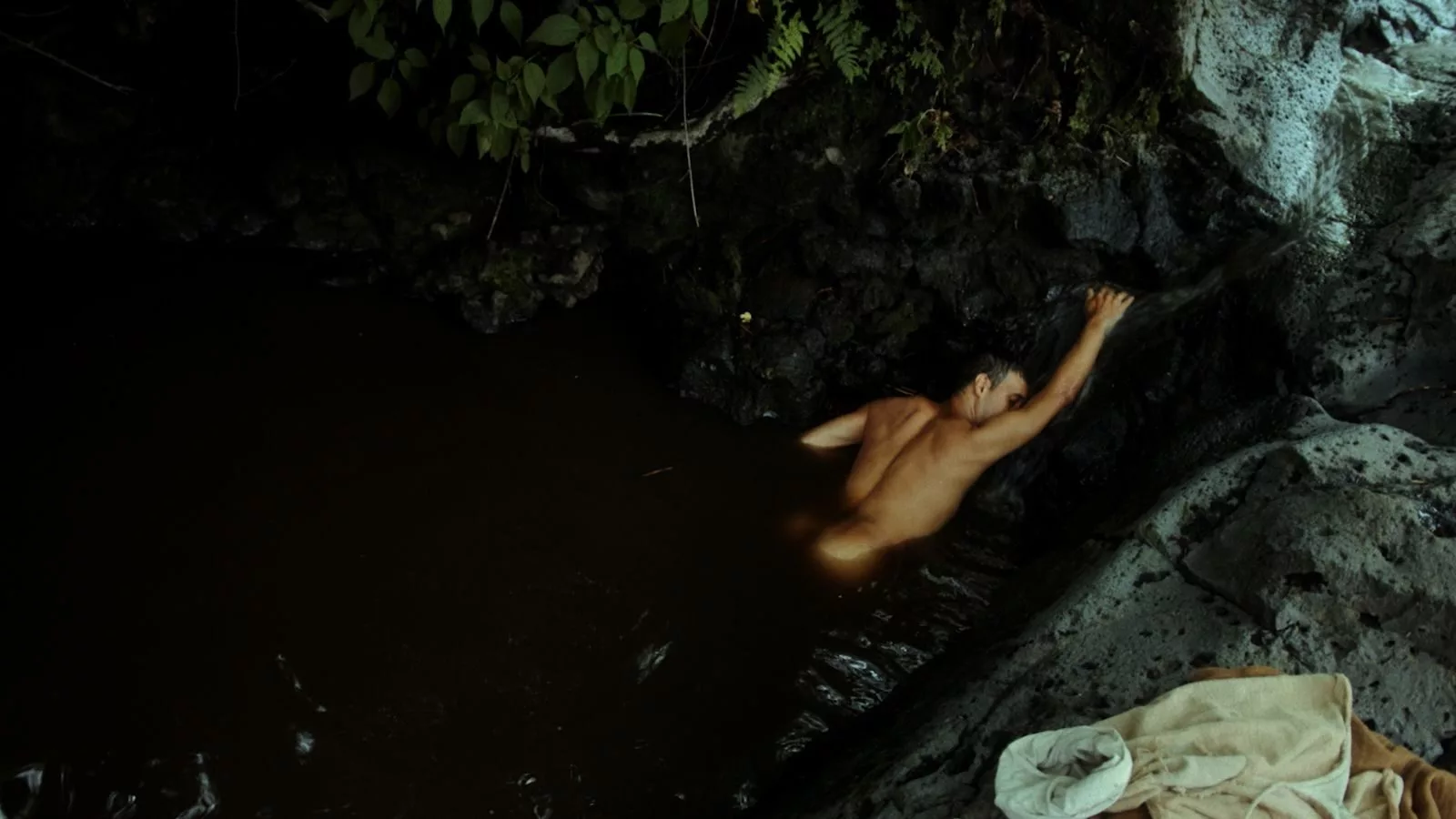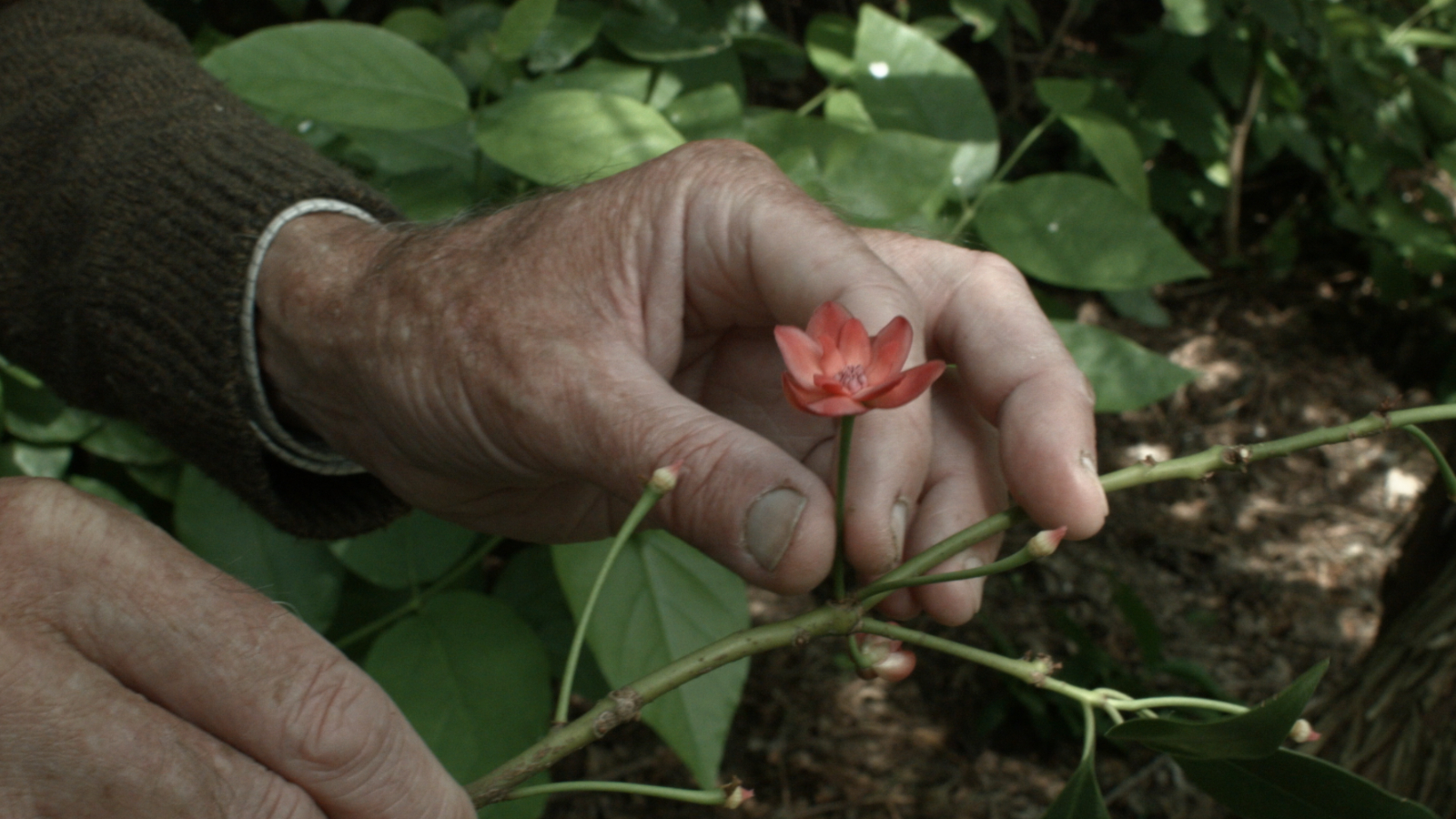Presented in the New York Film Festival’s Currents section, a complement to the main-slate selection that traces “a more complete picture of contemporary cinema with an emphasis on new and innovative forms and voices,” as per the programmers, all three films covered in this dispatch sit curiously between narrative and documentary traditions, challenging our ability to distinguish between fiction and reality by approaching the natural and quotidian with an artist’s cinematic free form and a poet’s sense of awe.
Early in Jem Cohen’s wondrous, expansive “Little, Big, and Far,” the section’s Centerpiece selection, Austrian astronomer Karl (Franz Schwartz) compares the unfathomable sprawl of the cosmos to the ecstatic, surging energies of free jazz. Listening to the Coltranes in his Vienna apartment, he describes the sensation of “chaos that isn’t really chaos,” a revelation that has informed the way he looks up at the night sky and looks back over the path his life has taken.
Often, that path appears to be quite a lonely one. Karl is married to Eleanor (experimental filmmaker Leslie Thorton), another cosmologist, but hasn’t seen her in years, given that she lives and works in Texas; their chosen form of communication is epistolary, emails and letters permitting them a regular correspondence about the decisions they’ve made and how these relate to the dying profession they have chosen. “We can’t see the wind, but we know when it’s in the trees,” reflects one voiceover. “Most of the people think they know what makes it all go round: profit and loss. That’s what they think turns this planet.”
Paralleling these conversations are interactions between Karl and a graduate student whose interest in celestial bodies and coincidences reflects a younger generation’s ample curiosity and evolving concerns. Karl is preoccupied by the concept that his grandson will live on a planet where it has become increasingly difficult to view the night sky; he fears what it will mean for humanity not to grasp its place in the larger constellation of things. Eventually, while in Greece for a conference, he travels to a remote island in search of a sky dark enough to let him see the stars again; but when he reaches this destination, Cohen invites the audience to gaze not only along with Karl but also upon him, as the totality of what this experience means to the aging astronomer is illuminated by the glimmering canopy above, transforming the man into another monument to time, space, and our impermanence within it.
A New York filmmaker and experimental artist whose patient observations of urban space and progression have long been inextricable from his interest in punk music and other cross-media forms of resistance to time and place, Cohen’s perhaps most widely known for “Museum Hours,” which studies the works of paintings by old masters so as to reveal the relevance of applying this same manner of close examination—and the ideological openness it requires—to the multiplicities of modern life. “Little, Big, and Far,” in its fascination with stargazing, reflects the constant presence of the unknown in our lives as a reminder to seize solitude amid the bustle of everyday existence, to be quiet and still, to look up and consider the universe. Doing so is not a passive action, Cohen seems to say; given science’s fraught relationship with modern politics, it’s a necessary reclamation of reality and perspective.
From its opening juxtaposition of images, which show a child inspecting the outside of a pine cone and an older man ascending a spiral staircase, the core preoccupation of Cohen’s film is ultimately this act of contemplation itself—specifically, an appreciation that studying the world around us, and ruminating upon the emotion and meaning of the patterns we observe within it, can be an intensely affirming, political act.

With “Lázaro at Night,” the Mexican Canadian filmmaker Nicolás Pereda continues his droll and dreamlike explorations of performance, identity, and the truth bleeding ambiguously through their interstices. Some familiarity with the prolific auteur’s body of work will be helpful for those feeling their way through his latest, another elusive meta-drama featuring recurrent characters played by performers from Pereda’s regular troupe of actors and most fixated on that slippery correspondence between narrative and reality.
Building upon the framework he established in “Fauna,” which blurred the lines between documentary and fiction in examining the war on drugs—and its melodramatic media representation—on Mexican social life, Pereda is operating in a more subdued, mundane, but ultimately no less enigmatic mode with this film, essentially an extended role-play that keeps working and reworking the nature of both “role” and “play” into unexpected configurations.
To the extent that “Lázaro at Night” can be easily described, it can be said that the film centers, at least initially, on a trio of actors in a Mexican artistic community, whose friendship dates back to a writing workshop they attended years earlier, though they’ve since become entangled in an love triangle. Played by Lázaro Gabino Rodriguez, Luisa Pardo Úrias, and Francisco Barreiro, all frequent Pereda collaborators who share names with their characters, the three actors are auditioning for parts in the same independent film, for a director with an unorthodox approach to casting.
First, the director auditions Lázaro for a role, then Luisa, in both instances disclosing his belief that actors reveal more about their aptitude for a particular role through non-dramatic activities, such as drinking a glass of water, as they do through reading dialogue or acting out a scene. “Instead of the actor becoming the character,” he explains, “the character becomes the actor.” It’s as clear a distillation as any of the metafictional play that abounds in Pereda’s filmmaking; he’s long delighted in blurring the boundaries between fantasy and reality, bringing the mannerisms and personal preoccupations of his actors into the roles he casts them in—or, perhaps more correctly, constructing his artifice over their truth.
To this point, one absurdist running joke finds Gabino insisting the other characters call him Lázaro; in life as in art, the actor was previously credited as “Gabino Rodriguez” but has more recently started performing as “Lázaro Gabino Rodriguez.” Yet Pereda’s sense of humor isn’t often so insular; albeit gently, “Lázaro at Night” depicts an amusing slippage of personal and professional jealousies. Luisa reveals to Lázaro, with whom she was romantically involved, that she’s now involved with Francisco; he seems more concerned that he and Francisco are going after the same role. “Are you seeing other actors?” Lázaro later asks the director. “What did I do wrong?”
Later, in the film’s mystifying second half, the fantastic mundanity of these sequences—which are made at once discursive and aloof by disorienting, disjunctive sound design that separates images of characters together from the conversations they share—is reoriented into mundane fantasy, via what seems to be Luisa’s interpretation of “Aladdin,” with Lázaro in the lead role. To say more about the story’s direction from here would be unwise; but Pereda charts a sidelong course around his characters’ amorphous identities, priorities, and desires, seldom emphasizing anything more than the language of their bodies to form a wry, shape-shifting meditation on sensuality, self, and our shortcomings related to both.

The latest from artist, filmmaker, and farmer Pierre Creton, which he co-directed with frequent collaborator Vincent Barré, “7 Walks with Mark Brown” follows a paleobotanist through seven areas in the Pays de Caux region of Normandy, accompanied by a film crew, as he attempts to complete what the film describes as a “crazy” quest: recreating a primary forest. Tranquil, tender, and transportive, Creton and Barré’s filmmaking style reflects their fascination with not only the natural world but those who devote their lives to its study.
Indeed, this film is a direct continuation of their work in “The Arc D’Iris: Memories of a Garden,” which heralded wild flowers the filmmakers scouted while hiking through the Himalayas, but also shares a focus on those living within vibrant landscapes with previous films by Creton, from the beekeepers of “Le Vicinal” to the gardeners of last year’s “A Prince” (his first completely fictional work). Combining digital photography (by Creton) and 16mm photography (by Antoine Pirotte and Sophie Rogers), the film is half emancipatory travelogue and half participatory exhibition, a walk in the woods that casts a loving eye on both the plant life it observes and the people observing them.
Much of the first part of “7 Walks with Mark Brown,” titled “The Shooting,” consists of Brown identifying various plants and discussing, in low and rapturous tones, their regional significance and scientific properties. That we’re in the presence of a true expert is never in question, but there’s such intimacy, often poetry, to Brown’s narration that one feels enthralled as much as enlightened by these long strolls through the French countryside. At one point, Brown recalls how a rare flower reminds him of a specific time in his life, and tears spring to the corners of his eyes; his eagerness to impart the wisdom gained from a life’s work is often seen to enchant the small crew traveling with him, and their gentle expressions of care toward Brown make the film feel even more supple and nurturing, a balm for the spirit.
There’s a romanticism to Creton and Barré’s practice that similarly leads the film away from more conventional markers of documentary filmmaking, foregrounding above all its subject’s passion and personal connection to the botanical life whose inner workings he so sensitively explicates to the audience. In the film’s second half, titled “Herbarium,” after Brown’s “seven days of happiness” walking with the crew come to a close, his commentary carries on, over tableaux vivant of the flora they’ve documented. By filming rather than photographing, it’s stated, “you get the soul of the plant.” Through each carefully framed close-up, “7 Walks with Mark Brown” shows us an exquisite microcosm of existence, containing rich history, meaning, and mystery.
“Little, Big, and Far,” “Lázaro at Night,” and “7 Walks with Mark Brown” all screened and were reviewed in the Currents section of the 62nd New York Film Festival (Sept. 14-Oct. 14, 2024, at
